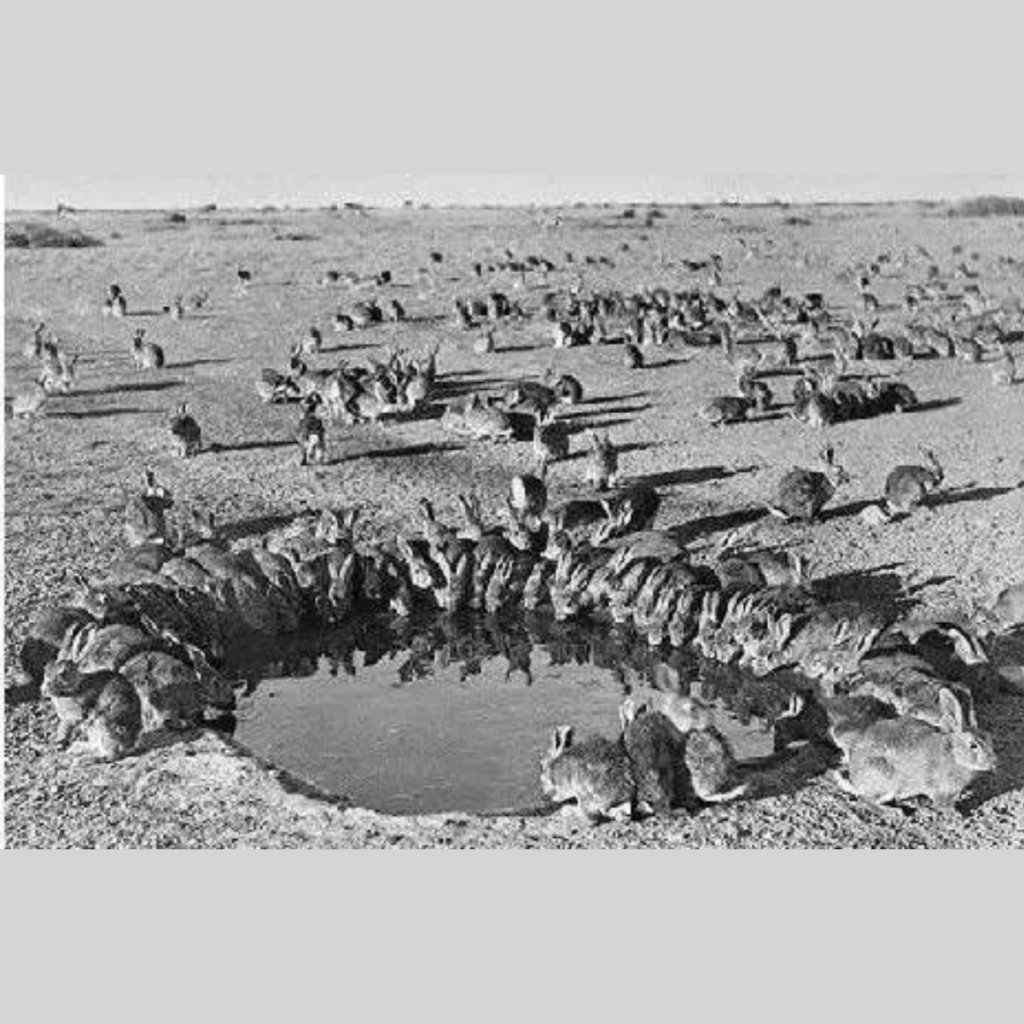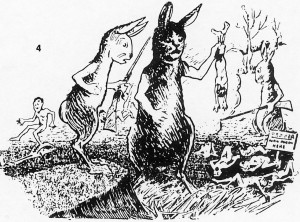
Thomas Austin is a man in history that does not receive enough mention. It is not due to heroic bravery or intelligence that Austin made it into the history books; on the contrary, his selfish longing for his old hunting ritual has plagued Australia for more than a century. It is his foolhardy decision that lands Austin in the history books. Thomas Austin, a member of the Victorian Acclimatisation Society, could not have been more wrong when he stated:
“The introduction of a few rabbits could do little harm and might provide a touch of home, in addition to a spot of hunting.”
In a moment of envy and gluttony, Thomas Austin set in motion a plan to provide himself hunting game and, at the same time, provide Australia with the biggest pest problem it has ever seen.

While one might think that “exponentially” is an exaggeration, in this instance, I assure you it isn’t. Looking at statistics across the years, it is astonishing the way in which the rabbits plagued Australia.
In 1866, just a few years after Thomas Austin brought his original rabbits to Australia, there were over 14,000 rabbits shot on Austin’s estate alone. By the 1940s, it was estimated that the rabbit population was as high as 800 million. Not only did the rabbits multiply on Austin’s property, but they migrated. By 1900, the rabbits had spread out 3,000 miles away from Austin’s estate. The rabbits continued to spread and it is currently estimated that they have affected and infiltrated over 1.5 million square miles of Australian land. In all of history, the rabbits of Australia hold the record of being the fastest of any colonizing mammal.
While the colonization of mammals is impressive, it was detrimental to Australia’s economy and environment. Still, to this day, the Australian government and private citizens spend millions of dollars suppressing (and exterminating) the rabbit population.
In the late 1800s the Australian government passed numerous laws to combat the overwhelming rabbit population: one of these said laws was the 1883 Rabbit Nuisance Act. One of its previsions was that children could receive six months in prison for letting loose a tame rabbit! When shooting and poisoning of rabbits wasn’t enough, the Australian government built a lengthy rabbit fence–it has been added to, and now totals 2023 miles.

Through the 1900s the population diminished numerous time, however, it never failed to come back each time. In the 1950s, due to the introduction of myxomatosis, the rabbit population dwindled down to 5% of its original size. This 5% resiliently came back and re-populated the nation. In 1996, the Australian government stared using a controversial calicivirus–inappropriately termed the “final solution”–to kill off the rabbit population. The Australian Environmental Management Authority reports that the rabbit population is decreasing, however, there are still plague conditions throughout parts of Australia.

The Foundation for a Rabbit-Free Australia claims that:
“The wild European rabbit is Australia’s most widespread and destructive pest animal. It causes extensive damage and further threatens our primary industries, biodiversity, and social values.”
They aren’t wrong–especially in regards to biodiversity.
Between the years of 1906 and 1936, rabbits destroyed all three species of parrots and twenty-three of the twenty-six (23/26) tree species found on an island off the southern coast of Australia. In other areas of Australia it is estimated that 66-75% of the native mammal species have vanished due to the rabbit infestation.
I’m not one to rejoice or embrace those who would change customs and traditions, however, I don’t blame those that move to expel the rabbit from its traditional Easter role. In place of the rabbit, many celebrate with the Easter Bilby (pictured below).
While Thomas Austin does have a page in Wikipedia–and a place in history–it doesn’t surprise me that his biography consists of approximately 300 words. Jerk…